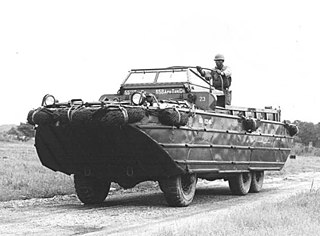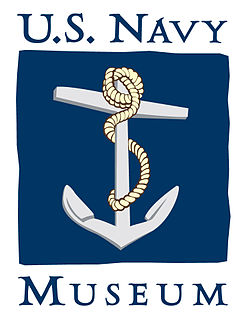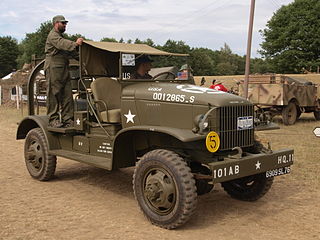The escort carrier or escort aircraft carrier, also called a "jeep carrier" or "baby flattop" in the United States Navy (USN) or "Woolworth Carrier" by the Royal Navy, was a small and slow type of aircraft carrier used by the Royal Navy, the United States Navy, the Imperial Japanese Navy and Imperial Japanese Army Air Force in World War II. They were typically half the length and a third the displacement of larger fleet carriers, slower, carried fewer planes, and more-lightly armed and armored. Escort carriers were most often built upon a commercial ship hull, so they were cheaper and could be built quickly. This was their principal advantage as they could be completed in greater numbers as a stop-gap when fleet carriers were scarce. However, the lack of protection made escort carriers particularly vulnerable, and several were sunk with great loss of life. The light carrier was a similar concept to the escort carrier in most respects, but was fast enough to operate alongside fleet carriers.

The United States Fleet Forces Command (USFF) is a service component command of the United States Navy that provides naval forces to a wide variety of U.S. forces. The naval resources may be allocated to Combatant Commanders such as United States Northern Command (USNORTHCOM) under the authority of the Secretary of Defense. Originally formed as United States Atlantic Fleet (USLANTFLT) in 1906, it has been an integral part of the defense of the United States of America since the early 20th century. In 2002, the Fleet comprised over 118,000 Navy and Marine Corps personnel serving on 186 ships and in 1,300 aircraft, with an area of responsibility ranging over most of the Atlantic Ocean from the North Pole to the South Pole, the Caribbean Sea, Gulf of Mexico, and the waters of the Pacific Ocean along the coasts of Central and South America.

Joint Expeditionary Base–Little Creek (JEB–LC), formerly known as Naval Amphibious Base Little Creek and commonly called simply Little Creek, is the major operating base for the Amphibious Forces in the United States Navy's Atlantic Fleet. The base comprises four locations in three states, including almost 12,000 acres (4,900 ha) of real estate. Its Little Creek location in Virginia Beach, Virginia totals 2,120 acres (860 ha) of land. Outlying facilities include 350 acres (140 ha) located just north of Training Support Center Hampton Roads in Virginia Beach, and 21 acres (8.5 ha) known as Radio Island at Morehead City, North Carolina, used for U.S. Coast Guard ships and personnel as well as serves as an amphibious embarkation/debarkation area for U.S. Marine Corps units at Marine Corps Base Camp Lejeune, North Carolina. It is also home to the Naval School of Music.

The DUKW is a six-wheel-drive amphibious modification of the 2+1⁄2-ton CCKW trucks used by the U.S. military during World War II and the Korean War.
The names of commissioned ships of the United States Navy all start with USS, for United States Ship. Non-commissioned, primarily civilian-manned vessels of the U.S. Navy under the Military Sealift Command have names that begin with USNS, standing for United States Naval Ship. A letter-based hull classification symbol is used to designate a vessel's type. The names of ships are selected by the Secretary of the Navy. The names are those of states, cities, towns, important persons, important locations, famous battles, fish, and ideals. Usually, different types of ships have names originated from different types of sources.

The Studebaker US6 (G630) was a series of 2+1⁄2-ton 6×6 and 5-ton 6×4 trucks manufactured by the Studebaker Corporation and REO Motor Car Company during World War II. The basic cargo version was designed to transport a 2+1⁄2-short-ton cargo load over any type of terrain in any weather. Most of these were exported to the Soviet Union under Lend-Lease by the USA during World War II, since the competing GMC 6×6 CCKW design proved to be more suitable for Western Front conditions.

The National Museum of the United States Navy, or U.S. Navy Museum for short, is the flagship museum of the United States Navy and is located in the former Breech Mechanism Shop of the old Naval Gun Factory on the grounds of the Washington Navy Yard in Washington, D.C., United States.

Brockway Motor Company was a builder of custom heavy-duty trucks in Cortland, New York, from 1912 to 1977. It was founded as Brockway Carriage Works in 1875 by William Brockway. His son George Brockway later turned the carriages into a truck manufacturer in 1909. The first trucks were high-wheelers. During World War I Brockway built 587 Class B Liberty trucks for the military. After the war they started a new range from 1-ton to 5-tons. They began with Continental engines but switched to Wisconsin in 1925. They bought the Indiana Truck Corporation in 1928 but were forced to sell it to White Motor Company in the early years of the depression. A new range, the V1200 was offered from 1934 to 1937. The V1200 used a 240 horsepower V12 American LaFrance engine and carried loads up to 15 tons.

The Diamond T Company was an American automobile and truck manufacturer. They produced commercial and military trucks.

In traditional nautical use, well decks were decks lower than decks fore and aft, usually at the main deck level, so that breaks appear in the main deck profile, as opposed to a flush deck profile. The term goes back to the days of sail. Late-20th-century commercial and military amphibious ships have applied the term to an entirely different type of hangar-like structure, evolving from exaggerated deep "well decks" of World War II amphibious vessels, that can be flooded for lighters or landing craft.

The GMC CCKW, also known as "Jimmy", or the G-508 by its Ordnance Supply Catalog nr, was a highly successful series of off-road capable, 21⁄2-ton, 6×6 trucks, built in large numbers to a standardized design for the U.S. Army, that saw heavy service, predominantly as cargo trucks, in both World War II and the Korean War. The original "Deuce and a Half", it formed the backbone of the famed Red Ball Express that kept Allied armies supplied as they pushed eastward after the Normandy invasion.

The M6 High-Speed Tractor was an artillery tractor used by the US Army during World War II.

The United States Navy (USN) is the maritime service branch of the United States Armed Forces and one of the eight uniformed services of the United States. It is the largest and most powerful navy in the world, with the estimated tonnage of its active battle fleet alone exceeding the next 13 navies combined, including 11 U.S. allies or partner nations as of 2015. It has the highest combined battle fleet tonnage and the world's largest aircraft carrier fleet, with eleven in service, two new carriers under construction, and five other carriers planned. With 336,978 personnel on active duty and 101,583 in the Ready Reserve, the U.S. Navy is the third largest of the U.S. military service branches in terms of personnel. It has 290 deployable combat vessels and more than 2,623 operational aircraft as of June 2019.

The G-506 trucks, 1+1⁄2-ton, 4x4, produced as the Chevrolet G7100 models, were a series of (light) medium four wheel drive trucks used by the United States Army and its allies during and after World War II. This series came in standard cargo, as well as many specialist type bodies.

The Underwater Archaeology Branch (UAB) of the Naval History & Heritage Command (NHHC) is a unit of the United States Department of the Navy. It was formally founded in 1996 as a consequence of the emerging need to manage, study, conserve, and curate the U.S. Navy's submerged cultural resources.

The M6 Bomb Service Truck is a truck that was produced by Chevrolet during World War II. The M6 was a 1.5-tonne (1.7-short-ton) 4x4 truck that was used to tow M5 Bomb Trailers around on airfields. It could move up to five M5 trailers at once. It either used a Beebee winch, a Holan Hoist, or a modified version of the Braden winch.

The T48 57 mm Gun Motor Carriage was a self-propelled anti-tank gun produced by the Diamond T company in 1943 for the United States. The design incorporated a 57 mm gun M1, a US production of the British Ordnance QF 6 pounder, mounted on an M3 Half-track.

The 2+1⁄2-ton, 6×6 truck was a standard class of medium duty trucks, designed at the beginning of World War II for the US Armed Forces, in service for over half a century, from 1940 into the 1990s. Also frequently known as the deuce and a half, or just deuce, this nickname was popularized post WWII, likely in the Vietnam war era. The basic cargo versions were designed to transport a cargo load of nominally 2+1⁄2 short tons over all terrain, in all weather. The 2+1⁄2-ton trucks were used ubiquitously in World War II, and continued to be the U.S. standard medium duty truck class after the war, including wide usage in the Korean and Vietnam Wars, as well as the first Gulf War.















